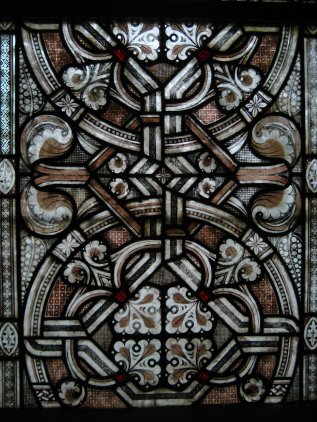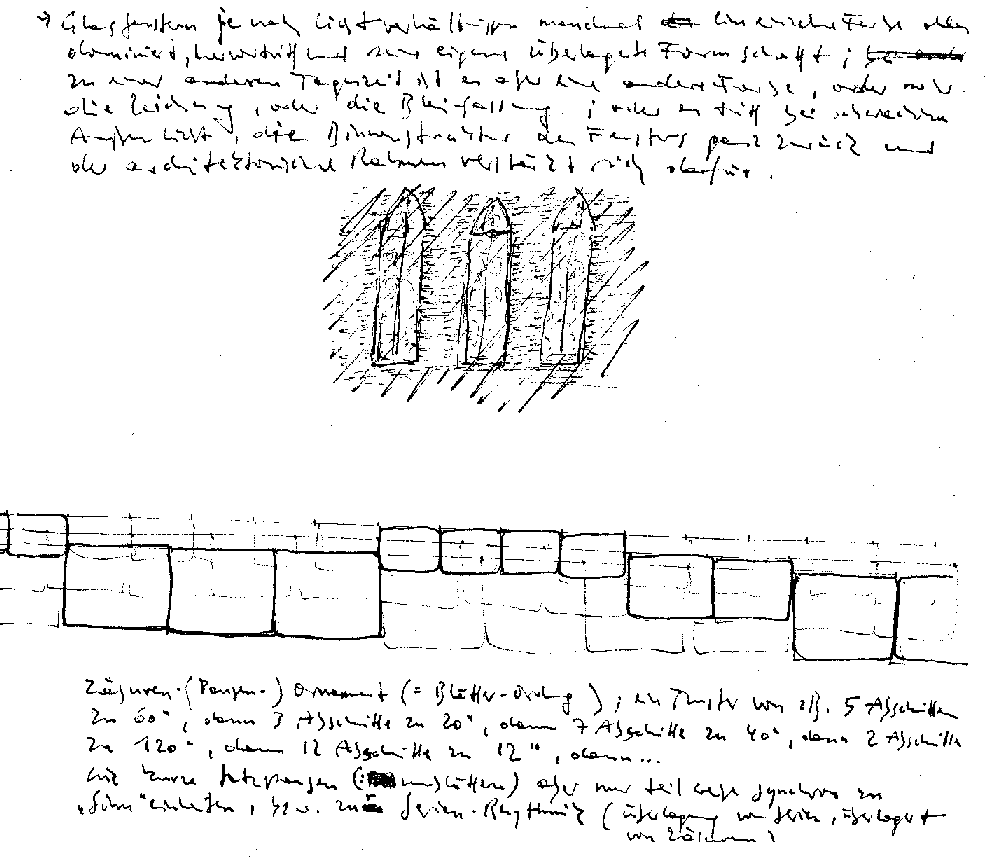Peter Ablinger:
GRISAILLES (1-100)
für 3 Klaviere (1991-93),
48', 3pno
 |
 |
 |
Christian Scheib about "Grisailles":
It is the Cistercian monastery Heiligenkreuz, south of Vienna, in the cloister of which glazings from the early 13th century have been preserved. The Romanesque cloister glazings are in accordance with what the so-called "Cistercian picture ban" - which actually was a ban to depict - is all about: The window panes seem to trust the effect of various shades of gray, among which there also are black and yellowish-beige ones; and each one of the bow glazings reveals another, in fact even geometric-ornamental pattern of its own. To describe this type of medieval window the term grisaille is being used.
Peter Ablinger has known and valued the Romanesque grisaille panes in Heiligenkreuz for a long time. Their lack of reference, which aims at transcendency not by representation in the sense of depiction, but by just being there, is what corresponds with the aesthetic attitude of Peter Ablinger. His many years of research into and beyond the limits of traditional views about what is music, art and art-music, often lead him into a paradoxical relationship to what is generally regarded as an understanding. Redundancy, then, does not prove to be opposed to information, but as ist facilitator; the ornament not as side effect, but as what is central in the art of depiction of the undepictable. That is why, at the beginning of the nineties, the art of grisaille has, for Peter Ablinger, become the giver of a title for this composition for three pianos. The fact that grisaille windows would cast shadowless light was highly significant for medieval theology. While the more frequent multi-coloured figurative depictions left colour patterns and clear shadows on churchfloors and praised God in a variety of occurences, symbols and references, those gray, ornamental, and no clear shadows casting windows outlined a more subtle - or better - more sublime image of God, an image of the finally inexplicable, the non-depictable. Whatever appeared bathed in this light did no longer leave any traces on this earth. That's what is sublime. "Light is all-important in the creation and composition of the world", a medieval theorist postulated; and he went on: "Space and time are but functions of light." One also can listen to Peter Ablinger's composition Grisailles in this way: The throbbing standstill as changing tinge of light, as a slow change (of light and therefore of space and time), fifty minutes long. Grisaffles 1-100 for three pianos consists of various levels of overlapping sound-layers. Repeated octaves and small, barely audible sounds made by fingers darting across the keys seem to be two of these levels. Peter Ablinger composed twenty-four layers to start with - each one following its own time and structure -, before these were being combined in a preliminary'score. And out of this preliminary subject, unplayable in its sheer crowd of three pianists, Peter Ablingrr obtained the piece: Sweeping in a selective way across the shimmering wealth of written notes as well as across those gray window panes, his gaze chooses what comes into view, and also what is playable instrumental-technically. For Peter Ablinger this work-technical analogy of the glance at sheets of music as well as at window panes is more than merely a vague metaphor: In the same way as during the sweeping of the gaze across the pane of glass, the certainty that somehow everything is encompassed in this gaze forms a relationship with the fact that one actually can focus one's gaze always onto a small spot only, the real performable piece stands in relation to the utopically sketched preliminary score. The pragmatical of the performability corresponds with the fact that each and everyone can look at the pane of glass out of a single perspective too, that - the other way round - this real everything of the one glance is fertile only, because a potential everything, something utopian remains perceptible.
Aside from composed, carefully chosen developments as far as the relationship of these sound layers to each other is concerned, it is the rehearsing in the respective acoustic of a room, or record ing-tech n ical decisions as to in which way fore- and background act with each other, that also determine, if - in order to stay with the metaphor of light beaming through those glass windows - the subtle nuances in bright noon light become unimportant; or if, at dusk, the background comes closer to the foreground.
(Christian Scheib, translated by Udo Breger)

"Grisailles", ink, sketch book (1991)
> score, page 4
> listen (piano: Hildegard Kleeb)
> CD
> Text zum Stück
> english notes
> Brief an Hildegard Kleeb

Premiere of "Grisailles", with Aima-Maria Labra, Isabell Perez-Requeijo-Perez, Ingrid Karlen on 3 pianos, Brucknerhaus Linz, "Zur Kunst der Klangzucht" 1994, photo: Sabine Gruber
Publisher:
 ZEITVERTRIEB WIEN BERLIN
ZEITVERTRIEB WIEN BERLIN
Bryan Eubanks, Gotzkowskystr. 15, D-10555 Berlin,
T: +49 / 176 / 47 39 29 97, zeitvertrieb@proton.me
siehe auch:
> Hypothesen über einen romanischen Karner
Hypotheses On A Romanesque Chappel (rough english translation)